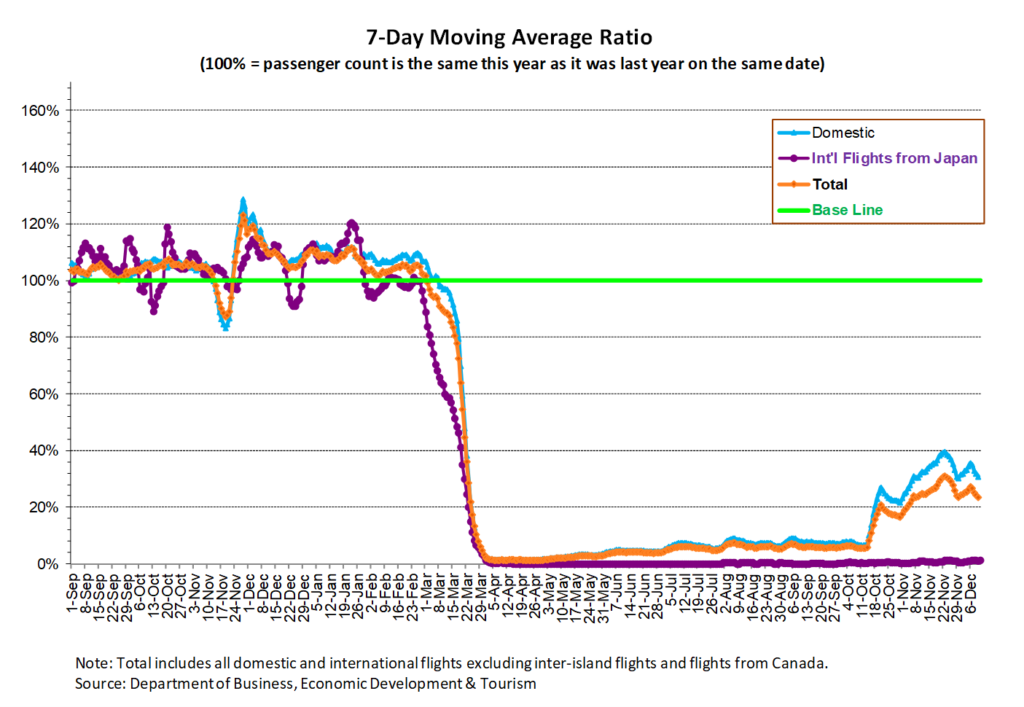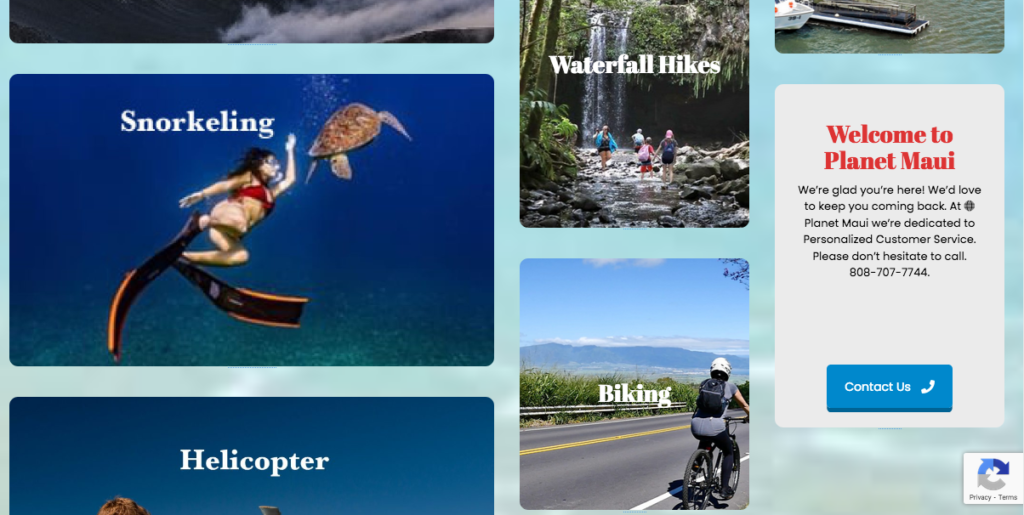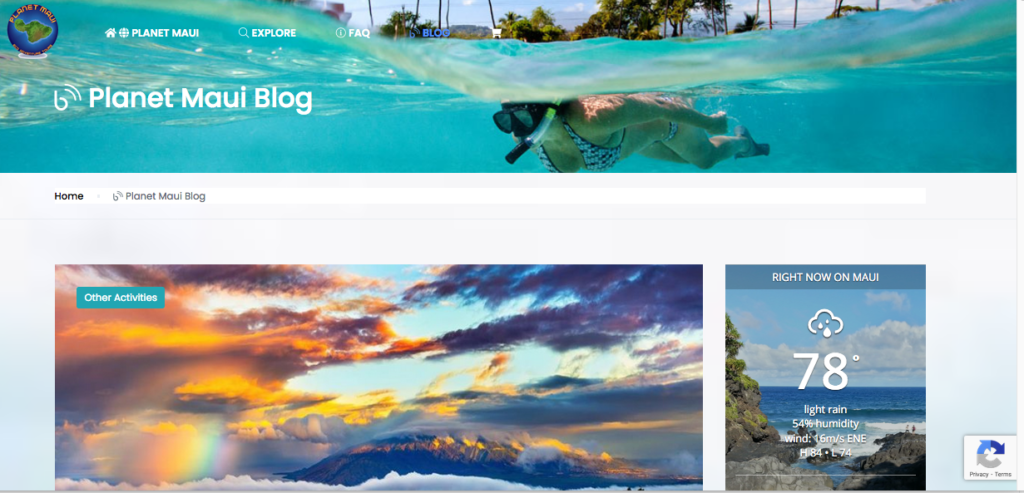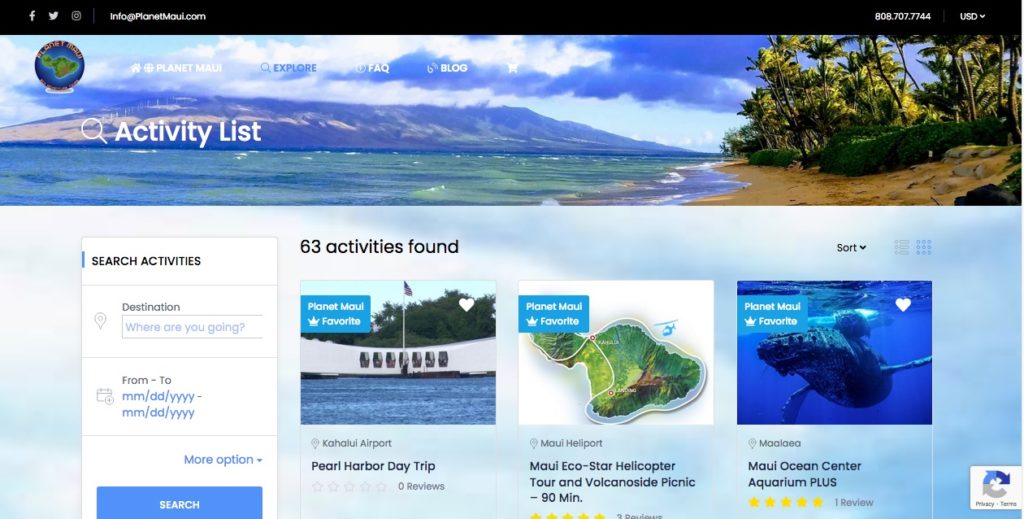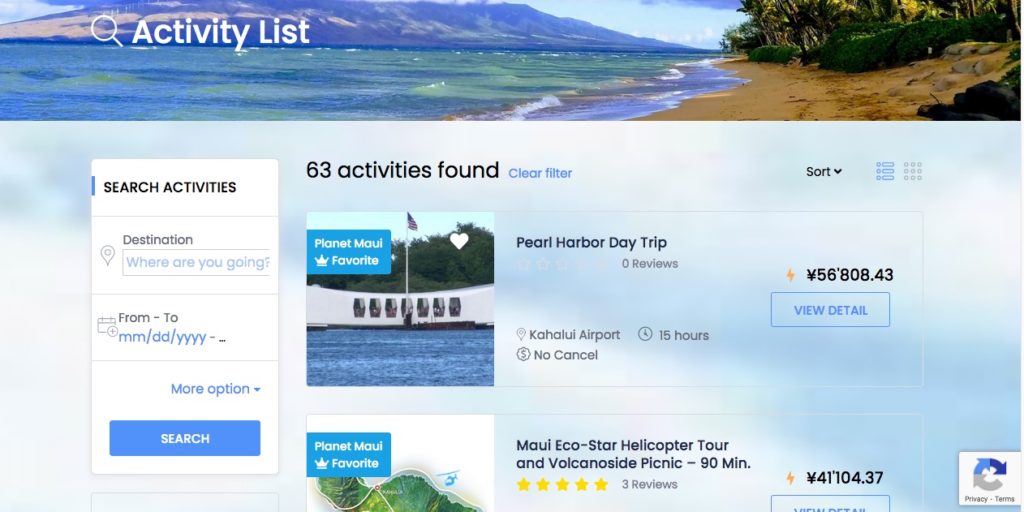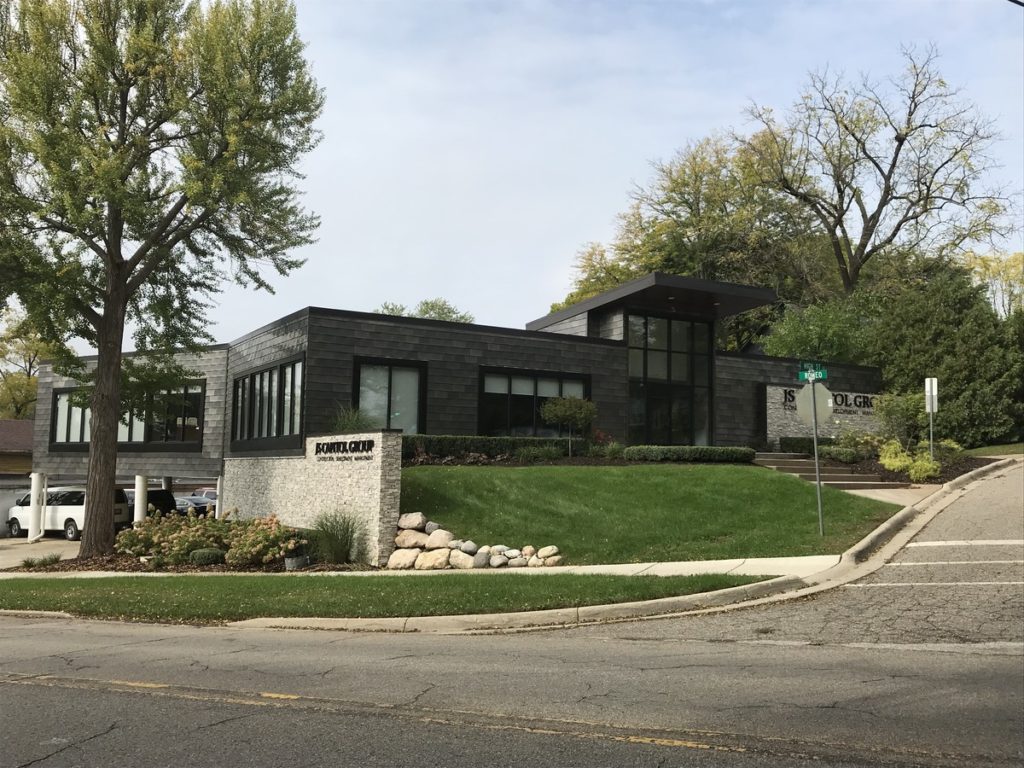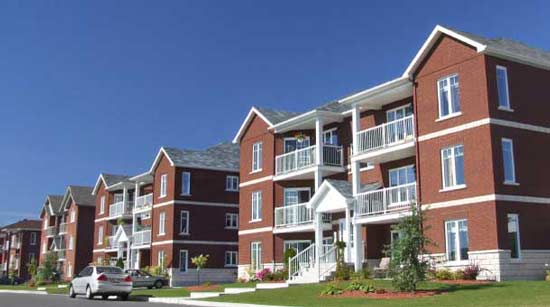What We Do
The following articles are samples of what we’ve done for businesses in recent years.
We encourage you to call our references and verify our track record.
We’re really, really good at this.
Jump to:
Activities Reseller
Last year we were approached by an investor group that wanted to get into the activity reseller business. They wanted a state-of-the-art website, something that blows you away with how slick it is.
Over months of interactive development we wrote PlanetMaui.com. It’s really cool, and we’re proud of it.
We then created an advertising and marketing plan.
We set a kickoff date for March 15th.
But Covid-19 beat us to it. They’ll be re-opening soon:
https://PlanetMaui.com
1. Most of the photos on the front page are flip cards, with additional information on the back. Hover your mouse or tap with your finger to see.
https://planetmaui.com/
2. Currency Conversion: There’s an option to display prices in the currencies of the most common countries Maui visitors come from. This feature currently requires manual updating of conversion rates; it can be updated automatically for a monthly subscription fee.
3. Users can choose how to display search results: Grid or List.
https://planetmaui.com/activity-search/
4. Lots of animation.
5. We created blog content and scheduled it to post on the website. We can create and schedule a month’s worth of blog posts in a few days, and then just check on it throughout the month.
https://planetmaui.com/blog/
6. After blog content is posted on the website it’s automatically posted to social media accounts:
https://www.facebook.com/PlanetMaui/
https://twitter.com/MauiPlanet
7. There is a newsletter subscription signup. Right column: https://planetmaui.com/blog/
8. Blog content posts automatically to the next newsletter.
9. Users can create membership accounts, which gives them access to additional features:
https://planetmaui.com/register/
10. Universally Responsive – All features work on all desktops, tablets and smartphones, vertically and horizontally, and in all browsers. The only caveat is that some animation features don’t work in old browsers (9+ years). Everything else does.
Reference: Joseph Kazanecki, (808) 359-2838 cell (Hawaii).


Snorkeling Boat
For six years we did the Internet marketing for a snorkel-dive boat on Maui. We worked closely with the managers and captains, tailoring ads seasonally as appropriate. We also built and maintained their websites and generated content for their sites and social media.
We consistently had a 12% to 15% sales increase each year. As of September 30th, 2019 online sales were up 17%, and sales overall were up 15% over 2018.
In the summer of 2019 the new owners of the boat brought in their own people. They took over marketing on October 1st, 2019.
Sales plummeted. The phones stopped ringing.
The staff was calling me and asking why the boat was empty. I explained that we didn’t do the advertising any more.
The boat finished 2019 with annual sales at 8% above 2018.
My point here is that we refine advertising for clients until it’s as responsive and cost-effective as we can make it, something that isn’t done by gut and feel but with methodical testing and statistical tracking.
Advertising isn’t just about buying ads. It’s about developing ads that sell, identifying the best places to put the ads and targeting the markets that are most likely to purchase your product.
We write multiple test ads and track their results, and do this on Google, Yahoo, Bing, Facebook, Instagram, etc. We also test ads based on geographic area, age and gender of respondents, and more.
Then we spend your ad budget where it’s going to have the best rate of return.
Reference: Bill Boston, (808) 268-2900 cell (Hawaii).
Luau
Po’ohala Productions produces luau shows on Maui. They contacted us to update their luau website: http://bestluauonmaui.com/.
Our discussions led to creating a second website, one with a different look and feel: http://thebestluauonmaui.com/.
We started tracking which website had the better closing rate.
We talked about Internet advertising. They gave us a test budget of $200.
For two weeks we wrote test ads and ran them on Google, Bing, Facebook, etc., and tracked the results. We then took the ad with the most responses and ran it for two weeks on the most responsive platforms.
You’re going to have to call Joe and verify it for yourself, because in that one month we sold over $12,000 worth of tickets on $200 worth of ads.
Then Covid-19 came along. The luau is reopened November 26th.
Reference: Joseph Kazanecki, (808) 359-2838 cell (Hawaii).
The Bonus
After advertising for a while on Google, when you end your ad your website is usually placing much higher in Google Search.
Property Management
In the summer of 2018 I was visiting my son and grand-kids in Michigan. With not much to do after the kids were in bed, I asked my son what I could do to help his business.
I updated his existing website, and then developed some additional sites designed to expand his market:
New Websites
https://MIsuburban.com/
https://acmApartments.com/
https://SubdivisionManagement.com/
I then worked up some ads and tested them. After a week I set up a modest, $100 a month ad budget on Google, targeted by key words, geographically and demographically.
Two weeks later my son called me. “Dad, can we cancel that ad on Google?”
“Sure, son. It’ll just take a minute. May I ask why?”
“I used to get one or two bid requests a month. In the past two weeks I’ve received seven requests for bid, and I need time to get caught up.”
So I paused the ad.
Now one of his staff turns the Google ad on and off as desired.
The challenge my son now faces is finding and training new staff to keep up with the flood of new clients.
Reference: Jason Carey, (248) 650-8983 office (Michigan).
For more about the importance of social media, click here.
Security Company
In July 2011 I was contacted by an old friend. He’d invented a new security monitoring device that significantly improved perimeter security monitoring – that’s for when you want to keep people out of your storage yard or construction site.
After ten years of selling his product he was doing $10,000 in annual sales. He offered me a partnership and stock options if I’d come to Tampa, FL and help him grow the business.
So I did. It took me six months to learn the business and find the marketing approach that worked, but once I did our sales took off. Soon we were selling systems all over the world.
In 2013 we did over $700,000 in sales. We reached the point that we were significantly impacting the business of the other two major players in the industry.
By mid-summer of 2014 we’d sold our patented system to a competitor and closed the business. My partner retired to the Philippines, and I moved to Maui.
What we were doing was so technically complex that I had to educate the consumers, first. I had to show them the potential benefits of our product, and describe in non-technical detail how it worked.
I also had to overcome the 50-year head start that the other two industry players had in the market.
The videos on this page will help explain what we were building.
I started with a DIY website, explaining how the product worked and supplying detailed installation drawings and instructions. I used lots of photographs and short videos.
I offered free system design, we drew schematics for customers and generated their materials list. Sales started rolling in, with an average ticket price over $10,000.
Armed with this experience, I sold our first complete, installed system to a recycle company for $38,000.
I hired a team of workers and trained them, on the job, how to build a system. I took lots of photos and video for future use.
Google ads, case studies on the websites, and word-of-mouth referrals brought in more sales every month.
The Components of Success
1. The Fence Hawk controller website – The magic box that made our system unique. Videos and articles about how it worked, with online sales.
2. I built DIY websites, describing how to build a complete perimeter security system using our product, with lots and lots of photos, and offered free planning and support services.
3. I created instruction manuals, schematics and videos – a complete library about building your own system that we could use as a reference library.
4. I offered design services for customers and dealers. With Google Earth Pro we could accurately measure a property and come up with a complete design, materials list and bid, without ever visiting the property. This made our cost of sales a fraction of the competition’s.
5. I did articles and videos comparing our system with the competitors, showing how and why ours was better, and more reliable.
6. Eventually I built over a dozen websites, each addressing specific aspects of perimeter security. Traffic to the sites was significant, considering how specialized our product was.
7. We did one full installation a month, typically over $35,000, but usually we designed a system, sold a complete materials package and shipped it to the customer. We then flew an installer out and had her supervise the customer’s crew in doing the installation.
8. Despite offering hundreds of products on our shopping pages, we only stocked the Fence Hawk monitors. Everything else was white-label drop-shipped by our suppliers. This means the packages had our company name on the label and shipping list, but the vendor’s warehouse address. It looked like we were a much bigger company than we were.
9. Even though customers could have saved as much as 50% on their systems by taking the materials list to their local vendors, they were willing to pay our premium prices for the convenience of one-stop shopping.
10. When doing a Google Search in our specialty areas we consistently came up in Google’s top ten.
11. In fact, we even came up in the top ten when searching for our competitors by name. One day I searched for our main competitor and seven of the top ten on Google were our pages. This competitor’s CEO called and requested a meeting a few days later.
12. I was responsible for all of the company marketing and sales.
Google Ads made this business. Nothing else I tested was effective. But my ads on Google, geared to very specific search terms, did fantastic. I had less than a dozen search terms, so specific that most months Google didn’t use all of the ad budget.
These videos explain what we sold. I produced all of the video.
This is the Product
Quick Overview of How It Works
How It Works, in more detail
One of the many DIY (do-it-yourself) videos I made
More of the videos can be seen here:
https://www.youtube.com/user/FenceHawk
The websites are gone now, but here are backups from the Internet Archives:
A. IntelligentFencing.com was our primary website, with 75 pages of content, hundreds of photos and dozens of embedded videos. When customers had a technical question we could refer them to the specific pages they needed. It was our online reference library.
B. ElectricFenceAlarm.com was our shopping website. Despite offering hundreds of items, the only thing we stocked was the Fence Hawk magic box. Everything else was drop shipped by vendors with our name and their warehouse address on the boxes and packing lists (white label shipping).
C. FenceHawk.com was devoted to description and sales of the magic box alone. This was primarily marketed to security companies and dealers.
D. PerimeterSecurityArray.com was one of a number of websites I built that reused material from our other sites, but had domain names geared to specific search terms. These ancillary sites generated traffic and made the phone ring – which was my goal.
In Summary
When you’re in a micro-niche market like perimeter security, there’s only so much money you can make selling magic boxes, even at $500.
But if you add 10- or $15,000 of accessories to the sale, and then add on installation labor and a service contract, it can get very profitable.
Reference
Reference: Bette Wright, (813) 361-1486 (Florida).


